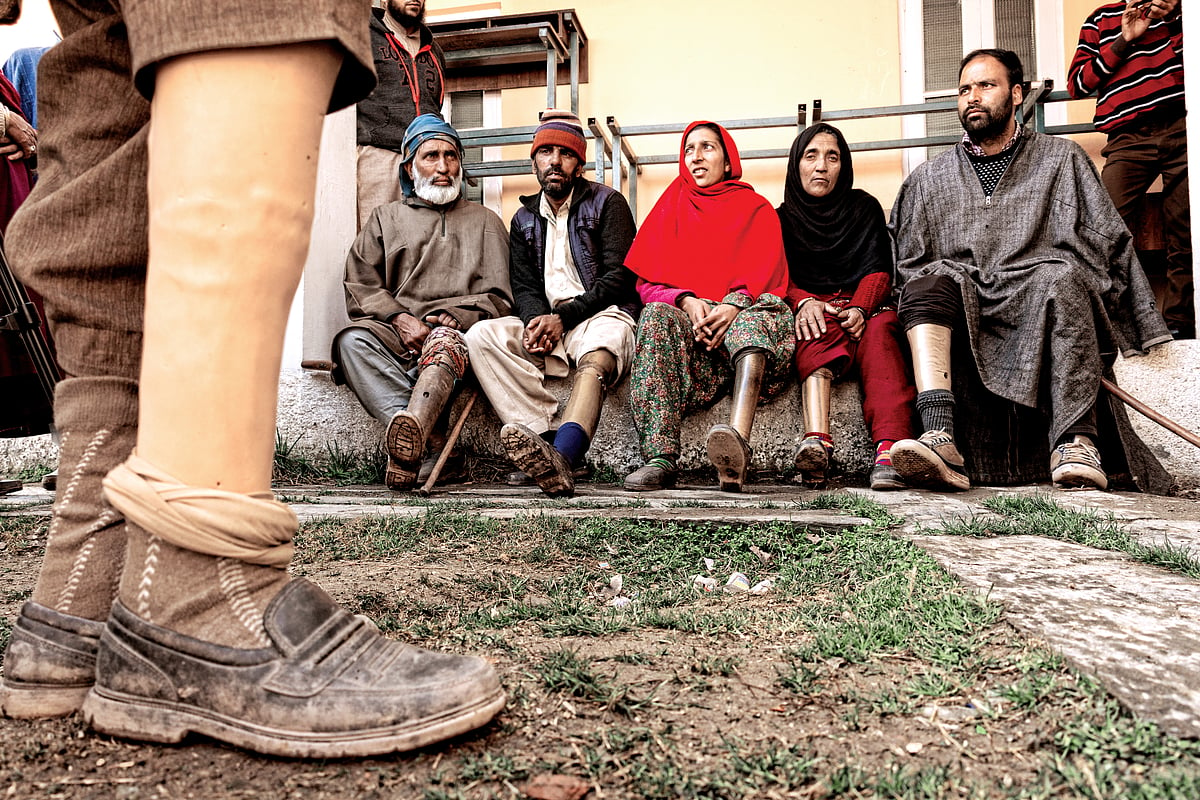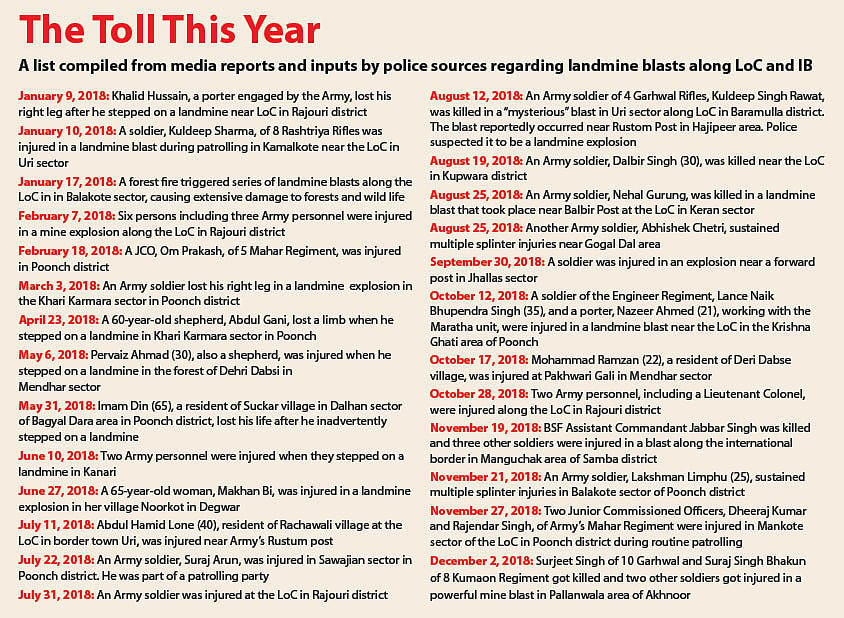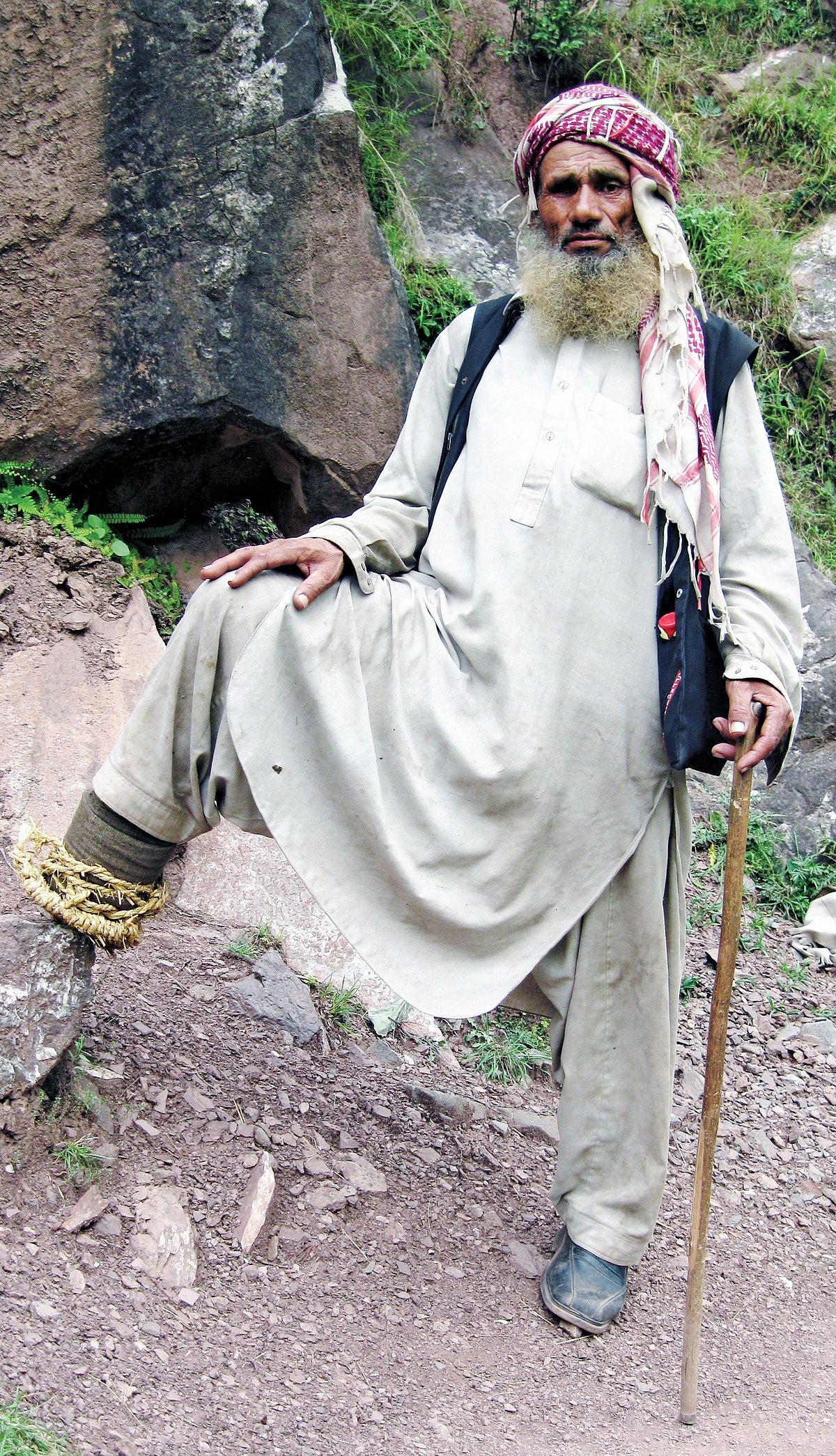Death-traps along the border: Why are Indian landmines killing Indians?
Reports of armed infiltrators crossing from Pakistan who are shot from time to time in Jammu and Kashmir, according to observers, are far more infrequent than Indian casualties by its own land mines

Last Saturday, December 2, two soldiers accidentally stepped on a landmine. The explosion killed them on the spot and left two others critically injured. The soldiers of Kumaon Regiment were part of an army column engaged in routine patrolling on the Akhnoor sector.
The Jammu based Defence spokesman, Lt. Colonel Devender Anand, however, denied media reports. The soldiers had indeed died, he said, but they died in an accident during training in Kalith area, where residents have been protesting renewal of the firing range.
Media reports speak of half a dozen security personnel sustaining injuries in November alone in landmine explosions. They included two Army officers while a BSF Assistant Commandant was killed.
But the Border security Force officially denied reports of landmine blast and claimed that three BSF jawans were injured and the Assistant Commandant killed when a grenade accidentally exploded during a training session in the Samba district.

Over two million mines were laid along the border with Pakistan during Operation Parakram in 2001 after a terrorist attack on the Indian Parliament building. They remain there as part of anti-infiltration measures. But ironically, they seem to kill innocent civilians and our own security personnel.
Every month this year, casualties have been reported in the local media. In over two dozen reported explosions, as many as 23 security personnel are said to have been injured. A Lt. Colonel, three JCOs and 11 civilians are said to be among those who lost their limbs or sustained grave injuries. Five Army soldiers are also reported to have been killed in landmine blasts in Kupwara, Uri and Akhnoor.
Have the landmines acted as a deterrent? Judging by claims that there has been a spurt in infiltration from across the border, landmines do not seem to have been effective. An Army spokesman grudgingly admitted on condition of anonymity that “not a single Pakistani infiltrator got killed or injured this year along the LOC”.
Media reports also do not suggest any casualty among infiltrators or militants, raising the disconcerting question of why we have installed the mines along the border at all.

“For the past several years, there have been no report of casualties due to landmines among the armed infiltrators crossing from Pakistan. They are reportedly shot from time to time, but even those reports are far more infrequent than Indian casualties by own mines,” asserts Yeshua Moser-Puangsuwan, a research coordinator with the Landmine and Cluster Munition Monitor, the research arm of the Nobel Prize-wining International Campaign to Ban Landmines (ICBL)— an international coalition of non-government organisations working to ban anti-personnel landmines. This needs to be reflected upon as a continuing tragedy, he stresses.
“Barely a month goes by without a report of an Indian military personnel or civilian being killed or injured by the mines along the LoC,” he says, adding that “We have no surveillance programme in the area to be able to provide a full accounting of landmine casualties. There are no known reports available from the Indian healthcare system to provide information on the full extent of the casualties. Also, medical data tends to miss those killed in the incident. What is reported in the media probably is not comprehensive.”
“The International Campaign to Ban Landmines sent a Note Verbale to the Ministry of External Affairs through the office of the Ambassador of India in Geneva last December but are yet to receive any formal reply,” Yeshua notes, claiming that “When I discussed casualties on the LoC with a Colonel Sumit Kabthiyal from the Ministry of Defence when he was visiting Geneva (during the meetings of the Convention on Conventional Weapons Group of Governmental Experts on August 30, this year), he flatly denied reports of landmine blasts, and described reports online as fake news.”
In 2018, India wrote in its formal annual reporting on the landmine issue to the UN, “India supports the UN vision of ‘a world free of the threat of landmines... where individuals and communities live in a safe environment conducive to development, and where mine survivors are fully integrated into their societies’.”

However, that is hardly the case for communities living near the LoC. At times, even the security personnel who survive landmine injuries in operational areas have to fight long and excruciating legal battles in the courts and Armed Forces Tribunals to get “battle causality status” for monetary assistance.
India maintains one of the world’s largest stockpiles of anti-personnel landmines. It is also one of the few countries which continues to deploy the antiquated weapon.
Also read: Why anti-mine boots that don't protect?
Follow us on: Facebook, Twitter, Google News, Instagram
Join our official telegram channel (@nationalherald) and stay updated with the latest headlines
